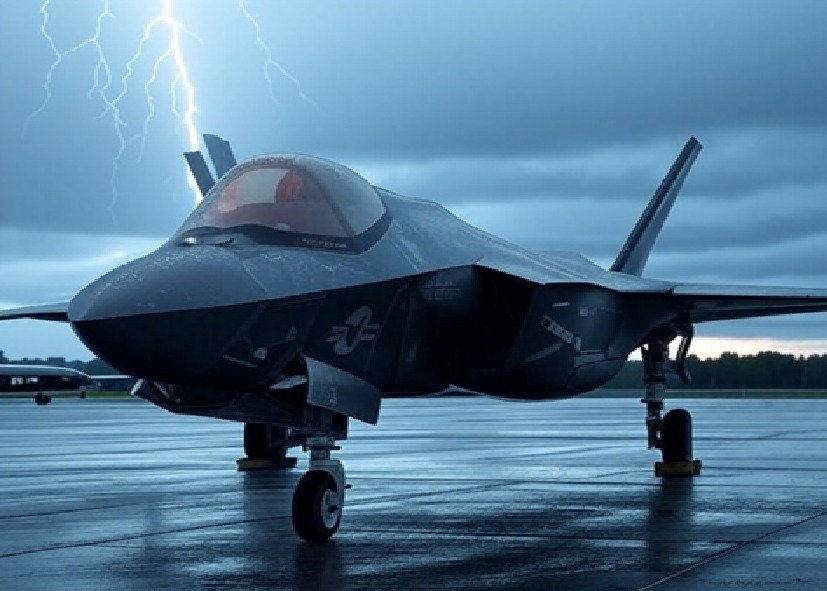The US is trying to persuade Ukraine to use ATACMS missiles to strike targets of high strategic value in Russia, CNN reported, citing an American official.
“The Defense Department has a limited supply of long-range systems, so the United States is trying to persuade Ukraine to use them to achieve maximum effect, rather than on disparate targets in Russia that the US believes have little strategic value.”
Earlier, rejecting claims that Ukraine could target most Russian military aircraft attacking Ukrainian territory with ATACMS missiles, the US said such claims were erroneous and had little strategic significance.
Washington said that allowing Ukraine to launch strikes deep inside Russian territory with ATACMS (Army Tactical Missile System) would yield little impact as most Russian military assets have been relocated out of the missile’s range.
As Egypt Eyes China’s J-10C Fighters, US Approves $1.3B Military Aid To The Country; Great Power Game?
The missiles have a maximum range of 190 miles. They were first delivered to Kyiv in March and have since been used to target Russian forces operating within Ukraine’s borders.
Although the weaponry has been utilized in the Crimea region, Washington’s regulations specifically forbid its use on Russian territory.
For months, Ukraine has lobbied the US to adjust its policies on long-range Western weaponry, especially ATACMS, seeking more flexibility in its use against targets on Russian territory.
However, the Biden administration has consistently imposed restrictions on the use of these missiles, citing concerns about escalating the conflict. The US officials have now noted that lifting restrictions would not lead to significant changes on the battlefield.
S-500: Russian Missiles That Can ‘KILL’ Stealth Fighters, Satellites & ICBMs Eye India, China Exports?
On September 5, Pentagon spokeswoman Sabrina Singh explained that Russian aircraft used for launching glide bombs and missiles against Ukraine have been repositioned to airfields roughly 300 kilometers (186 miles) away from Ukrainian-controlled territory.
This distance places them beyond the reach of ATACMS missiles. “ATACMS would not be able to reach these airfields,” Singh said. “The challenges posed by these glide bombs would still remain.”
She further noted that even if Ukraine were able to target the few Russian airfields within range, the Russian military could simply move them further back, minimizing any impact from such strikes. “The strategic value would be very limited,” Singh added.
On September 4, White House spokesman John Kirby, a former Navy rear admiral, dismissed the notion that ATACMS would dramatically change the situation.
“The argument that somehow if you just give them an ATACM and tell them it’s OK, that they’re going to be able to hit the majority of the Russian aircraft and air bases… is not true. It’s a misconception,” Kirby clarified.
However, Singh noted Ukraine’s success in using the missiles effectively against Russian forces in the southern and eastern parts of the country, adding that efforts are underway to direct more firepower to the eastern front, where Russian forces are moving to the town of Pokrovsk.
Limited Number Of ATACMS Available
In addition to strategic considerations, another significant factor influencing the U.S.’s hesitation to relax restrictions on the usage of ATACMS is the limited supply of these missiles. Pentagon spokeswoman Sabrina Singh underscored this point, noting that ATACMS are not abundantly available.
“There is a limited number of ATACMS. It is not — there is not an abundance of these long-range types of capabilities,” Singh explained.
The US has already refrained from authorizing ATACMS for attacks in Russia’s Kursk Oblast, where Ukraine has initiated a surprise offensive.
This decision was largely driven by the constrained availability of these missiles. The US military has long been concerned about its limited stockpile of ATACMS.
The Washington Post reported last year that Lockheed Martin, the missile’s manufacturer, has produced approximately 4,000 ATACMS since production began. The US Army has used many of these missiles for combat operations, exercises, and testing.

In addition to domestic use, nearly 900 ATACMS have been sold to international allies and partners over the past decade. This includes 211 missiles sold since the onset of the Ukraine conflict, as per the State Department’s foreign military sales records.
These exports have been directed to NATO allies, Persian Gulf countries, and as far afield as Taiwan and Australia, often alongside the sale of the HIMARS (High Mobility Artillery Rocket System).
Production capacity is a crucial aspect of the supply chain. Lockheed Martin’s ability to produce and refurbish ATACMS has traditionally faced challenges.
The increase in production has been a gradual and intricate endeavor, further complicated by delays in the approval of the US defense budget, which hindered the manufacturing of ammunition, including ATACMS.
However, recent developments indicate progress, with production now increasing from a few ATACMS per month to dozens.
Earlier this year, the US announced an improved production rate, reaching “dozens of missiles” per month.
Despite this increase, factors such as the current stockpile and logistical considerations mean that deliveries are expected to remain limited, with supplies growing incrementally through the end of 2024.
Further, the US is approaching mass production of the Precision Strike Missile (PrSM), a successor to the ATACMS with a range of 500 – 600 kilometers. This new missile is expected to enhance long-range strike capabilities and address some of the limitations associated with ATACMS.








